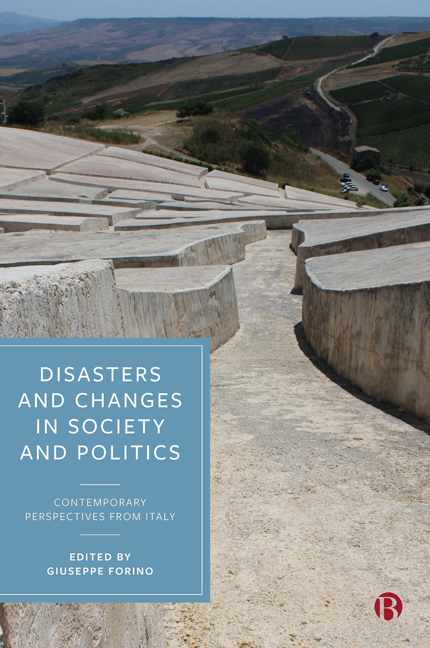Book contents
- Frontmatter
- Contents
- List of Figures and Tables
- Notes on Contributors
- Introduction – An Overview of the Book: Beyond Conventional Approaches to Disaster Recovery
- PART I Making Sense of Post-disaster Changes in Society and Space
- PART II Post-disaster Politics
- PART III Disasters and Conflicting Knowledges
- PART IV Organizations Adapting to Post-disaster Changes
- Index
3 - The Permanent Red Zone: An Ethnography of Spatial Practices in the Areas of the Italian Central Apennines Affected by Earthquakes (2016– 17)
Published online by Cambridge University Press: 17 December 2024
- Frontmatter
- Contents
- List of Figures and Tables
- Notes on Contributors
- Introduction – An Overview of the Book: Beyond Conventional Approaches to Disaster Recovery
- PART I Making Sense of Post-disaster Changes in Society and Space
- PART II Post-disaster Politics
- PART III Disasters and Conflicting Knowledges
- PART IV Organizations Adapting to Post-disaster Changes
- Index
Summary
Introduction
The 2016– 2017 earthquakes affected an area, distributed among four regions (Abruzzo, Lazio, Marche and Umbria) and 140 municipalities, generally referred to as ‘Central Italy’. Rich in nature, culture and art (with two national parks: Monti Sibillini, and Gran Sasso and Monti Della Laga), this area is also strongly administratively and morphologically fragmented and mainly affected by a general process that is making it politically marginalized and culturally, socially and economically vulnerable (Ciuffetti, 2019; Giovagnoli, 2020).
Approximately 65,500 seismic events were recorded from 24 August 2016 to 28 April 2017 by the Italian National Institute of Geophysics and Volcanology (INGV, 2017), significantly exceeding the average number of earthquakes verified annually in Italy. The ‘Amatrice-Norcia-Visso’ seismic sequence exceeded magnitude 4 on the Richter scale 21 times, peaked at 6.5 on the morning of 30 October 2016, with the epicentre in Castelsantangelo sul Nera. The earthquake of 24 August hit the Alta Valle del Tronto and had particularly devastating effects on the border area between the Rieti and Ascoli Piceno provinces. It caused 299 victims among Amatrice, Accumoli, Arquata and Pescara del Tronto. The number of displaced people were slightly less than 5,000 in April 2016 but increased to 31,763 after the earthquakes of October 2016. Most of the inhabitants lost their homes after the earthquake in 2016 that razed the historic centres of Amatrice and Pescara Del Tronto to the ground and rendered more than 90 per cent of the towns in the Alto Nera area inaccessible.
The impact of seismic events of this magnitude is capable of profoundly disrupting the relation with spatiality and temporality and, more generally, with daily life coordinates and reference points. In such cases, therefore, issues of housing and dwelling are key to understand the multidimensional impacts of disaster. This chapter draws from an extended ethnography in the epicentral area of the October 2016 earthquake, the Alto Nera (which includes the municipalities of Visso, Ussita and Castelsantangelo sul Nera). Figure 3.1 below depicts the affected area: in light grey the 140 municipalities affected by the earthquake (the so called ‘crater of Central Italy’), in dark grey the three municipalities of Visso, Ussita and Castelsantangelo sul Nera.
- Type
- Chapter
- Information
- Disasters and Changes in Society and PoliticsContemporary Perspectives from Italy, pp. 48 - 65Publisher: Bristol University PressPrint publication year: 2024

